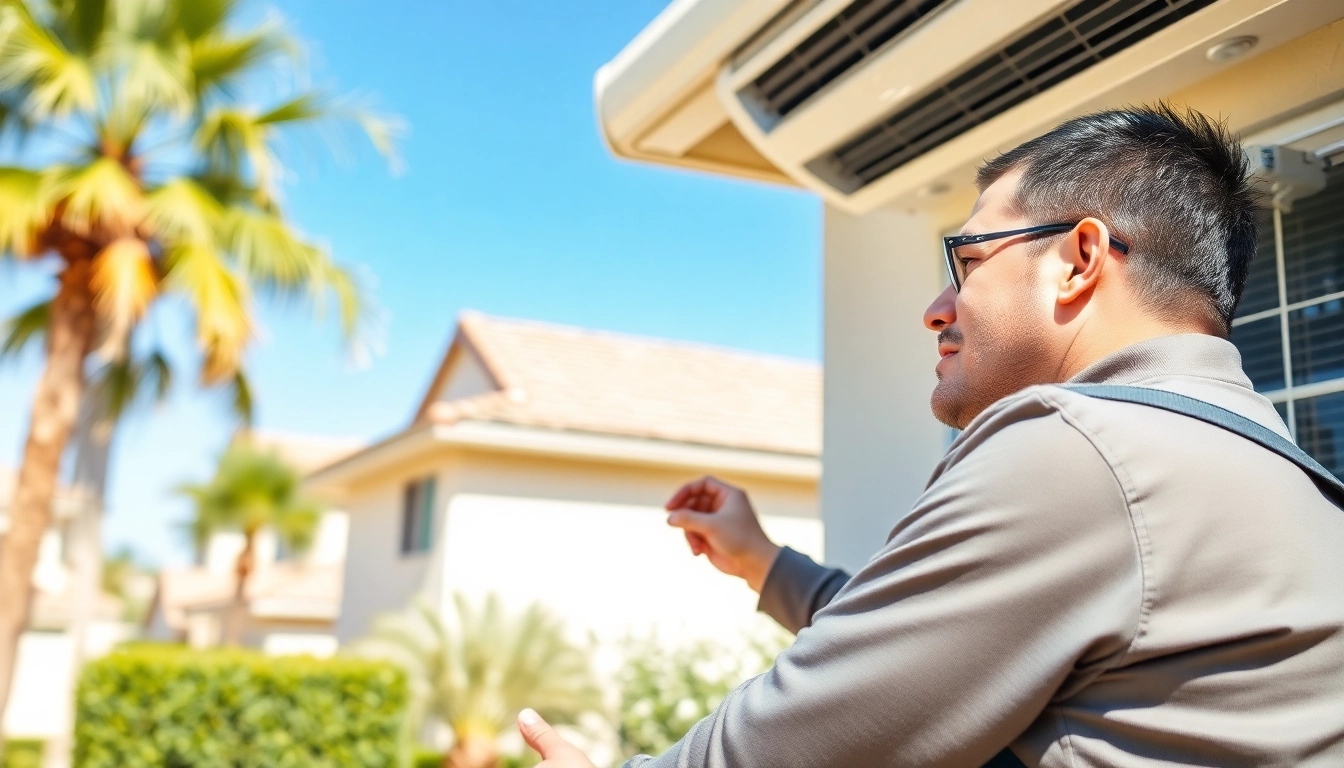1. Understanding AC Systems: Components and Functionality
Air conditioning systems are an essential aspect of modern living, especially in regions with extreme temperatures such as Glendale, AZ. Understanding the components and functionality of these systems can help homeowners appreciate their importance and identify potential issues before they escalate. Let’s delve into the details to help you maintain a comfortable indoor environment.
1.1 Main Components of Air Conditioning Units
An air conditioning unit consists of several key components that work together to cool the air in your home. These include:
- Compressor: Often regarded as the heart of the system, the compressor pumps refrigerant through the air conditioning system, enabling heat absorption and dissipation.
- Condenser Coil: Located outside, the condenser coil releases heat absorbed from your home to the outside air, aided by a fan that circulates outside air over the coil.
- Evaporator Coil: Found indoors, the evaporator coil absorbs heat from the indoor air and cools it down using the refrigerant.
- Expansion Valve: This component controls the flow of refrigerant into the evaporator coil, allowing the refrigerant to evaporate and absorb heat efficiently.
- Air Handler and Fan: The air handler blows the cooled air into your home, thanks to fans that are strategically placed within your HVAC system.
1.2 How AC Systems Work to Cool Your Home
The cooling process begins with the compressor, which compresses refrigerant gas into a high-pressure state and pushes it into the condenser coil. Here, it releases heat and converts to a liquid state. As the liquid refrigerant passes through the expansion valve, it experiences a drop in pressure and transitions into a low-pressure gas that travels to the evaporator coil. In the evaporator coil, the refrigerant absorbs heat from the indoor air, effectively cooling it down. The cooled air is then circulated back into the living areas through the air handler and fan, maintaining a comfortable temperature.
1.3 Common Issues That Require AC Repair
Even the most robust air conditioning systems can encounter issues that may necessitate ac repair Glendale AZ. Common problems include:
- Refrigerant Leaks: Insufficient coolant levels can reduces the system’s efficiency.
- Electrical Failures: Issues with wiring or electrical components can cause the system to malfunction.
- Dirty Filters: Clogged filters restrict airflow and decrease efficiency, leading to more significant system strain.
- Compressor Issues: Problems with this vital component can halt the cooling process entirely.
- Strange Noises: Unusual sounds can indicate mechanical problems that require professional attention.
2. Why Timely AC Repair is Crucial
Addressing AC issues promptly can lead to significant benefits, including lower repair costs, improved home comfort, and extended system lifespan.
2.1 Consequences of Ignoring AC Problems
Neglecting signs of trouble can exacerbate issues, leading to more severe damage. For example, a simple refrigerant leak can strain the compressor if left unchecked, ultimately resulting in a costly replacement. Additionally, ignoring signs of malfunction may lead to diminished air quality, increased energy bills, and a higher risk of complete system failure.
2.2 Signs Your AC System Needs Repair in Glendale, AZ
Awareness of when your AC needs repair is essential for timely action. Watch out for the following warning signs:
- Inconsistent Cooling: If certain rooms are significantly warmer, it may indicate an airflow issue.
- Unusual Odors: Strong smells can indicate electrical issues or mold growth inside the unit.
- Frequent Cycling: Short cycling, where the system turns on and off in quick succession, can suggest a faulty thermostat.
- Increased Humidity: If your home feels muggier than usual, your AC may not be removing moisture effectively.
2.3 Benefits of Regular Maintenance and Repair
Regular maintenance offers numerous advantages, such as:
- Improved Efficiency: A well-maintained system operates more efficiently, leading to reduced energy consumption and lower utility bills.
- Extended Lifespan: Routine check-ups can prolong your AC unit’s life by preventing major issues.
- Healthier Indoor Air: Regular maintenance improves air quality by keeping filters clean and preventing mold growth.
- Peace of Mind: Knowing that your system is in good shape allows you to enjoy your home without worry about unexpected breakdowns.
3. Choosing the Right AC Repair Service in Glendale, AZ
Selecting a reputable AC repair service is essential for ensuring high-quality maintenance and repairs.
3.1 Factors to Consider When Selecting an HVAC Company
When comparing HVAC companies in Glendale, consider the following factors:
- Licensing and Insurance: Ensure the company is properly licensed and insured to operate in your area.
- Experience: Look for companies with a proven track record in AC repair and maintenance.
- Service Offerings: Verify that the company offers a full range of services, including emergency repairs and maintenance contracts.
- Response Times: Prompt response may be crucial, especially during peak summer months.
3.2 Comparing Local Competitors for Quality Service
Research local competitors through online reviews, testimonials, and word-of-mouth referrals. Engaging with community discussions can provide insights into the reliability and performance of different HVAC companies.
3.3 The Importance of Customer Reviews and Testimonials
Customer reviews serve as a valuable resource for gauging the quality of service offered by HVAC companies. Positive reviews often highlight competence, professionalism, and customer satisfaction, whereas negative feedback can alert you to potential issues.
4. Cost of AC Repair: What to Expect
The cost of AC repairs can vary significantly based on various factors, including the type of repair needed and the service provider’s pricing structure.
4.1 Typical Pricing for Common Repairs
Understanding typical pricing for common AC repairs can help you budget appropriately:
- Refrigerant Recharge: $100 – $400 depending on the type of refrigerant and the amount needed.
- Compressor Replacement: $1,200 – $2,500 on average, a significant expense but necessary if the compressor fails.
- Thermostat Replacement: $100 – $400 depending on the type of thermostat installed.
- Electrical Component Repairs: $85 – $150 for minor repairs.
4.2 Factors Affecting the Cost of AC Services
Several factors can affect repair costs including:
- Type of AC Unit: Central systems tend to be more expensive to repair than window units.
- Repair Complexity: More complicated repairs or installations will generally incur higher labor costs.
- Location: Service costs may vary based on geographical location and seasonal demand.
- Parts Availability: The availability of replacement parts can influence repair costs; rare parts may drive up expenses.
4.3 How to Avoid Hidden Fees with HVAC Repairs
To avoid unexpected costs during repairs, consider the following strategies:
- Ask for Estimates: Obtain written estimates before work begins to ensure transparency in pricing.
- Understand Charging Structure: Familiarize yourself with any hourly rates or flat fees charged by the technician.
- Inquire About Warranty: Always ask if parts and labor come with a warranty; reputable companies typically offer some form of guarantee.
- Read the Fine Print: Review contracts carefully for unclear terms that might indicate hidden fees.
5. DIY Tips for Basic AC Troubleshooting
While professional intervention is often necessary, understanding how to perform basic troubleshooting can help you identify problems early on.
5.1 Safety First: Important Precautions
Before starting any AC troubleshooting, prioritize safety by following these guidelines:
- Turn Off Power: Always shut off power to the AC unit before attempting any repairs or checks.
- Use Proper Tools: Ensure you have the right tools available to avoid frustration or accidents.
- Know Your Limitations: Avoid attempting complex repairs beyond your skill level to prevent personal injury or further damage to your system.
5.2 Simple Troubleshooting Steps for Homeowners
Engaging in basic troubleshooting can often pinpoint issues. Here are some steps to consider:
- Check the Thermostat: Ensure it’s set to cooling mode and that the temperature setting is appropriate.
- Inspect Air Filters: Check and replace dirty air filters to improve airflow and efficiency.
- Examine Circuit Breakers: Confirm that the circuit breaker for the AC unit has not tripped.
- Clear Debris: Remove debris from the exterior unit to enhance airflow and heat dissipation.
5.3 When to Call a Professional AC Repair Technician
Some issues require professional assessment, particularly when:
- Electrical Problems Occur: Any issues related to wiring or electrical components should be handled by a licensed technician.
- Refrigerant Issues are Present: Only certified professionals should handle refrigerant due to environmental regulations and safety protocols.
- System Breakdown Happens: If your AC fails to turn on after basic troubleshooting, seeking professional help is necessary.
- Multiple Symptoms Appear: If you notice several warning signs, a comprehensive system check by a technician is warranted.



